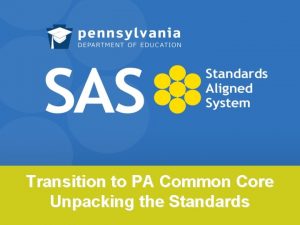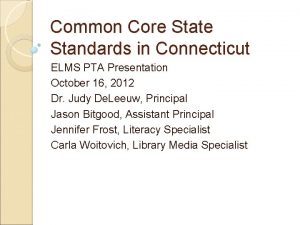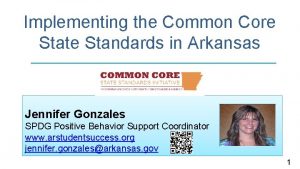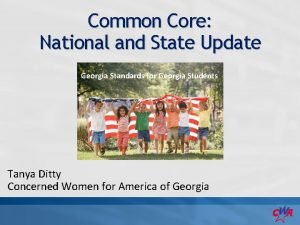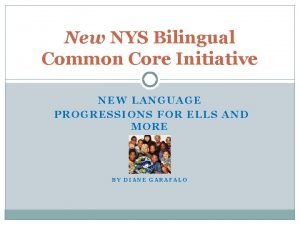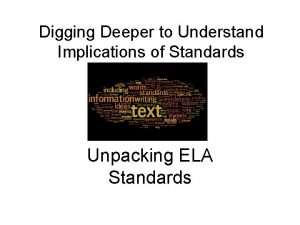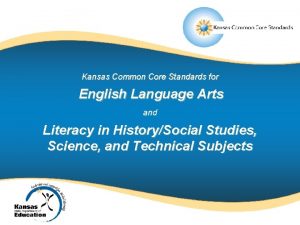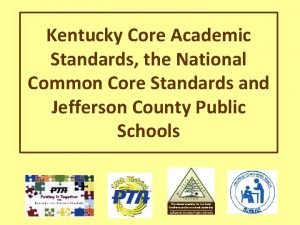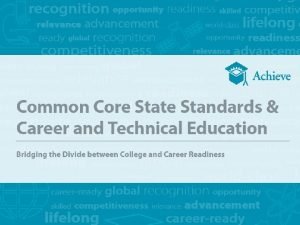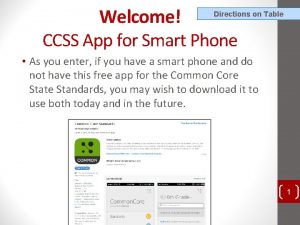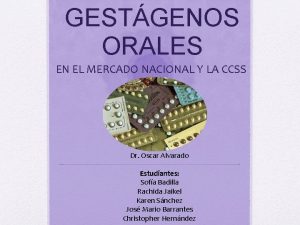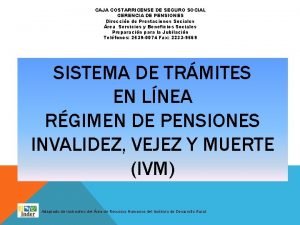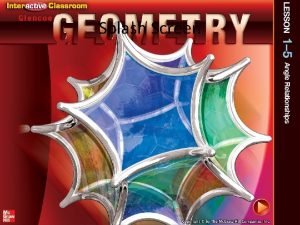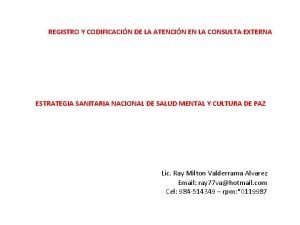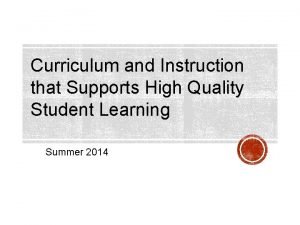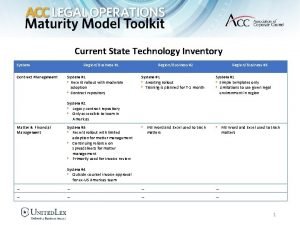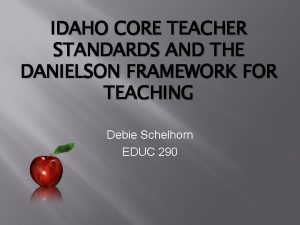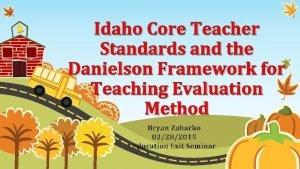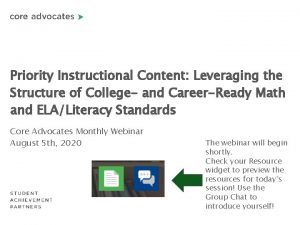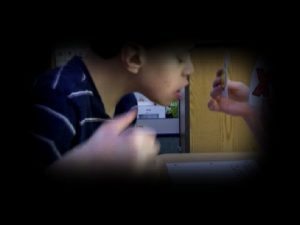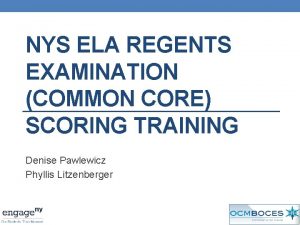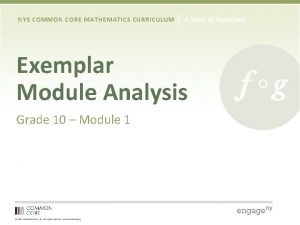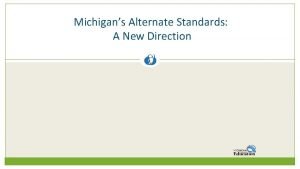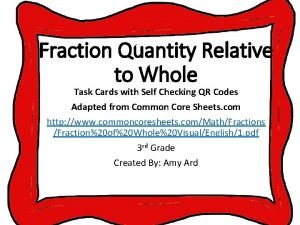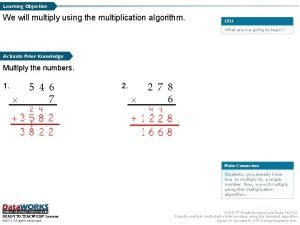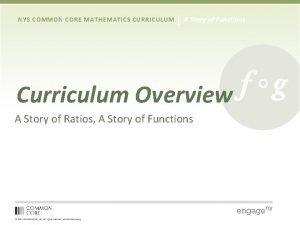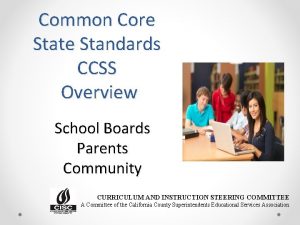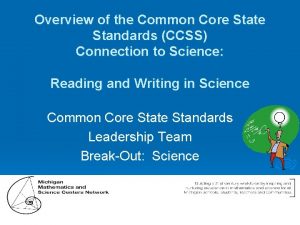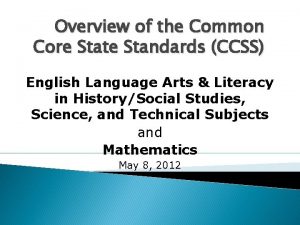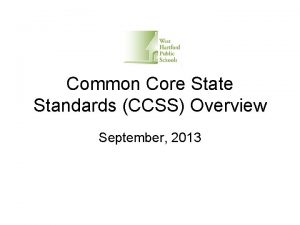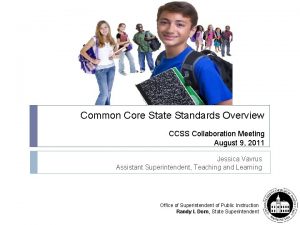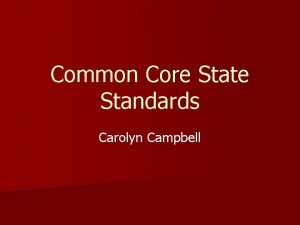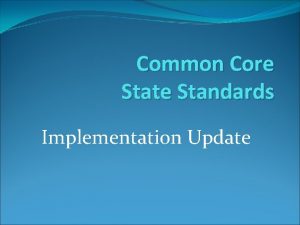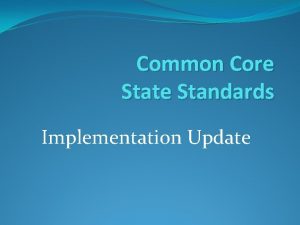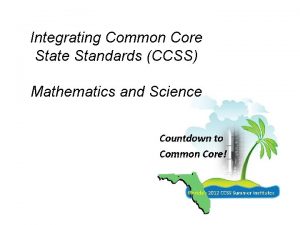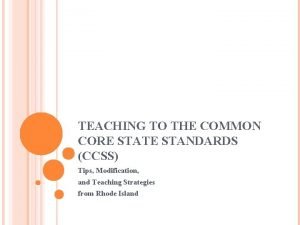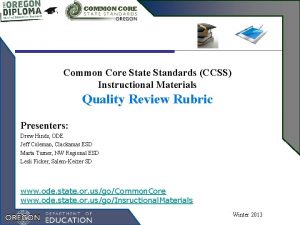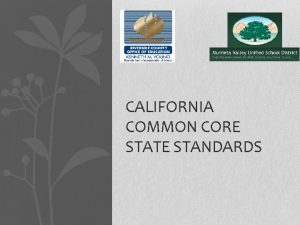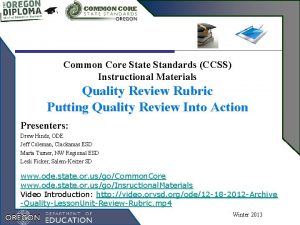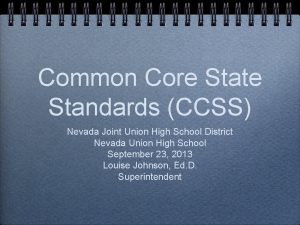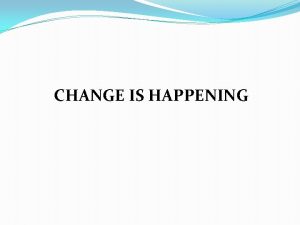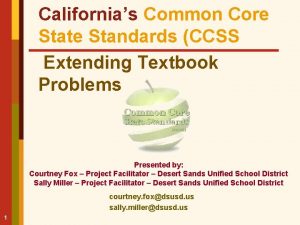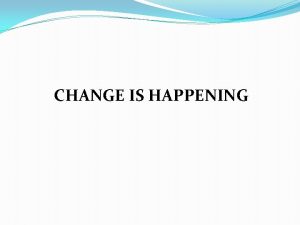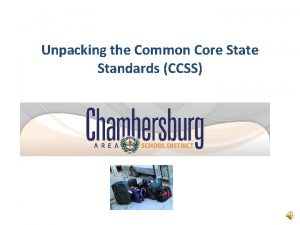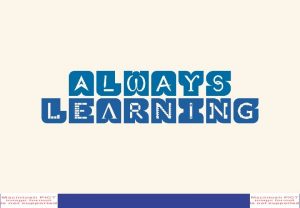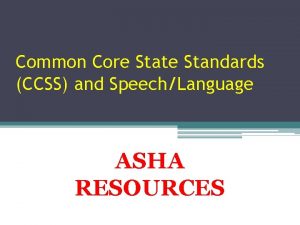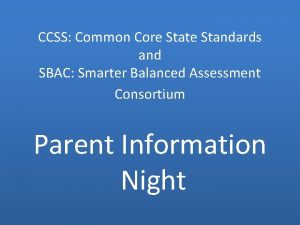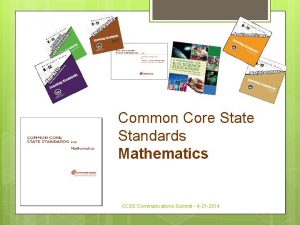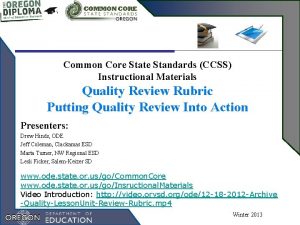Overview of the Common Core State Standards CCSS




































- Slides: 36

Overview of the Common Core State Standards (CCSS) Connection to Science: Reading and Writing in Science Common Core State Standards Leadership Team Break-Out: Science

Purpose: To help students independently read and comprehend scientific text, and to write about science concepts.

Rationale § § § Understand basic scientific terminology Find basic information in a brief body of text Translate information into a table, graph, or diagram Identify similarities and differences between experiments Determine whether given information supports or contradicts a hypothesis or conclusion, and why Science College Readiness Standards, ACT

Tools http: //www. mi. gov/documents/mde/Science_WAC_2_3_264454_7. pdf

Tools

Common Core State Standards Science: § “Next Generation Science Standards” – are being developed in two phases. Phase I involves writing a Conceptual Framework, coordinated by the National Research Council, from which the standards will be written. This Conceptual Framework is due to be released during the first quarter, 2011. § Phase II actually writing the standards. Draft Standards should be available for public comment May, 2011. They will be revised and re-released by December, 2011. Michigan Curriculum Review Cycle 6 -4 -10 http: //www. mi. gov/documents/mde

Common Core State Standards Science: § The Next Generation Science Standards have not been written yet. Discussion has begun about mechanics, presentation style and “grain size, ” but important decisions such as whether they are “grade level” or “grade span” have yet to be made. § According to the Michigan Curriculum Review Cycle (dated June, 2010) they anticipate “Next Generation Science Standards” to be adopted in Spring, 2013; implemented during 2013 -2014; and first assessed in 2016 -2017. Michigan Curriculum Review Cycle 6 -4 -10 http: //www. mi. gov/documents/mde

Common Core State Standards - ELA Reading “Anchor Standards”: Grades 6 -12 Literacy in History/Social Studies, Science, & Technical Subjects: Key Ideas and Details 1. Read closely to determine what the text says explicitly and to make logical inferences from it; cite specific textual evidence when writing or speaking to support conclusions drawn from the text. 2. Determine central ideas or themes of a text and analyze their development; summarize the key supporting details and ideas. 3. Analyze how and why individuals, events, or ideas develop and interact over the course of a text.

Common Core State Standards - ELA Reading “Anchor Standards”: Grades 6 -12 Literacy in History/Social Studies, Science, & Technical Subjects: Craft and Structure 4. Interpret words and phrases as they are used in a text, including determining technical, connotative, and figurative meanings, and analyze how specific word choices shape meaning or tone. 5. Analyze the structure of texts, including how specific sentences, paragraphs, and larger portions of the text (e. g. , a section, chapter, scene, or stanza) relate to each other and the whole. 6. Assess how point of view or purpose shapes the content and style of a text.

Common Core State Standards - ELA Reading “Anchor Standards”: Grades 6 -12 Literacy in History/Social Studies, Science, & Technical Subjects: Integration of Knowledge and Ideas 7. Integrate and evaluate content presented in diverse formats and media, including visually and quantitatively, as well as in words. 8. Delineate and evaluate the argument and specific claims in a text, including the validity of the reasoning as well as the relevance and sufficiency of the evidence. 9. Analyze how two or more texts address similar themes or topics in order to build knowledge or to compare the approaches the authors take.

Common Core State Standards - ELA Reading “Anchor Standards”: Grades 6 -12 Literacy in History/Social Studies, Science, & Technical Subjects: Range of Reading and Level of Text Complexity 10. Read and comprehend complex literary and informational texts independently and proficiently.

Common Core State Standards - ELA Writing “Anchor Standards”: Grades 6 -12 Literacy in History/Social Studies, Science, & Technical Subjects: Text Types and Purposes 1. Write arguments to support claims in an analysis of substantive topics or texts using valid reasoning and relevant and sufficient evidence. 2. Write informative/explanatory texts to examine and convey complex ideas and information clearly and accurately through the effective selection, organization, and analysis of content. 3. *Write narratives to develop real or imagined experiences or events using effective technique, well-chosen details and well-structured event sequences.

Common Core State Standards - ELA Writing “Anchor Standards”: Grades 6 -12 Literacy in History/Social Studies, Science, & Technical Subjects: Production and Distribution of Writing 4. Produce clear and coherent writing in which the development, organization, and style are appropriate to task, purpose, and audience. 5. Develop and strengthen writing as needed by planning, revising, editing, rewriting, or trying a new approach. 6. Use technology, including the Internet, to produce and publish writing and to interact and collaborate with others.

Common Core State Standards - ELA Writing “Anchor Standards”: Grades 6 -12 Literacy in History/Social Studies, Science, & Technical Subjects: Research to Build and Present Knowledge 7. Conduct short as well as more sustained research projects based on focused questions, demonstrating understanding of the subject under investigation. 8. Gather relevant information from multiple print and digital sources, assess the credibility and accuracy of each source, and integrate the information while avoiding plagiarism. 9. Draw evidence from literary or informational texts to support analysis, reflection, and research.

Common Core State Standards - ELA Writing “Anchor Standards”: Grades 6 -12 Literacy in History/Social Studies, Science, & Technical Subjects: Range of Writing 10. Write routinely over extended time frames (time for research, reflection, and revision) and shorter time frames (a single sitting or a day or two) for a range of tasks, purposes, and audiences.

Card Sort Activity 1. Choose ONE 6 th-8 th Grade Reading Standard (RED). 2. Identify the Science Inquiry Process (IP), Inquiry Analysis and Communication (IA), or Reflection and Social Implications (RS) expectations that most closely align with it (GREEN). 3. Choose ONE 6 th-8 th Grade Writing Standard (YELLOW). 4. Identify the Science Inquiry Process (IP), Inquiry Analysis and Communication (IA), or Reflection and Social Implications (RS) expectations that most closely align with it (GREEN).

Teaching Strategies Reading: 1. Word Cards 2. Question-Answer Relationship 3. Semantic Feature Analysis Writing: 1. Main Idea 2. Argumentation

Reading Strategies: Word Cards (WAC pages 17 -18) (RWS pages 34 -35) Reading 4. “Interpret words and phrases as they are used in a text, …”

Reading Strategies: Word Cards

Reading Strategies: Word Cards 7 th Grade Unit 1: “Waves and Energy”

Reading Strategies: Word Cards 7 th Grade Unit 1: “Waves and Energy” Choose ANY example Word Card: State Assessable: Instructionally Useful: wavelength sun’s radiation seismic wave water wave light energy sound wave energy vibration matter waves energy transfer nuclear reactions solar energy transform waves transverse waves transfer crest trough amplitude frequency erosion greenhouse effect medium

Reading Strategies: Question-Answer Relationship (QAR) (RWS p. 20 -23) Reading 8. “Distinguish among facts, reasoned judgment, and speculation in a text. ” Students learn to identify four question types: 1. 2. 3. 4. Right there – answers are explicitly found in the text. Think and search – students have to read several sentences to derive the answer. Author and you – students required to infer from or interpret the context, students draw on background knowledge. On your own – the response lies solely within the realm of the student’s own thinking.

Question-Answer Relationship (QAR) Sample Passage: 6 th Grade Unit 2 - Ecosystems Read passage: p. 8 -13 Page 13 Questions 1 -10 Label each question • • Right There Think and Search Author and You On Your Own

Reading Strategies: Semantic Feature Analysis (RWS p. 29 -34) Reading 7. “Integrate technical information expressed in words in a text with a version expressed visually …” Key Feature Vocabulary Term Key Feature + + + Vocabulary Term Key Feature + +

Semantic Feature Analysis (RWS p. 29 -34) Reading 7. “Integrate technical information expressed in words in a text with a version expressed visually …” 5 th Grade Unit 2 Animal Systems L. OL. 05. 41 Identify the general purpose of selected animal systems (digestive, circulatory, respiratory, skeletal, muscular, nervous, excretory, and reproductive). L. OL. 05. 42 Explain how animal systems (digestive, circulatory, respiratory, skeletal, muscular, nervous, excretory, and reproductive) work together to perform selected activities.

Semantic Feature Analysis (RWS p. 29 -34) Reading 7. “Integrate technical information expressed in words in a text with a version expressed visually …” 5 th Grade Unit 2 Animal Systems SYSTEM: Digestive Circulatory Respiratory Skeletal Muscular Nervous Excretory Reproductive Spinal Cord Skin Nose Can be Found in your Arm Causes Protects Something the Body to Move Removes Waste

Semantic Feature Analysis (RWS p. 29 -34) Reading 7. “Integrate technical information expressed in words in a text with a version expressed visually …” 5 th Grade Unit 2 Animal Systems SYSTEM: Spinal Cord Skin Digestive Nose ? Circulatory ? Respiratory X Reproductive X ? X X Removes Waste X ? X X Muscular Excretory Causes Protects Something the Body to Move X X Skeletal Nervous Can be Found in your Arm ? X X X ? ? ? X

Writing Strategies: “Main Idea” Graphic Organizer (WAC p. 27 -28) Provides an organizational structure for follow-up essays. Writing 2. “Write informative/explanatory texts, including the narration of … scientific procedures/experiments, …”

Writing Strategies: “Main Idea” - Video Example: “Chemical Reactions” Annenberg Media - 7 th Grade Unit 2: Physical and Chemical Properties and Changes in Matter S. IP. 07. 11 Generate scientific questions based on observations, investigations, and research. S. IP. 07. 12 Design and conduct scientific investigations. S. IP. 07. 13 Use tools and equipment appropriate to scientific investigations. P. CM. 07. 21 Identify evidence of chemical change through color, gas formation, solid formation, and temperature change. P. CM. 07. 22 Compare and contrast the chemical properties of a new substance with the original after a chemical change. P. CM. 07. 23 Describe the physical properties and chemical properties of the products and reactants in a chemical change.

Writing Strategies: “Main Idea” - Video Example: “Chemical Reactions” - 7 th Grade Unit 2: Physical and Chemical Properties and Changes in Matter Can be shown with a chemical formula Form a gas Chemical Reactions happen when substances react with each other to form new substances. Mass stays the same Change in Temperature

Writing Strategies: “Main Idea” - Video Example: “Chemical Reactions” - 7 th Grade Unit 2: Physical and Chemical Properties and Changes in Matter Observations Hypothesis An Experiment is a test to find the answer to a question or hypothesis. Variables Measurements

Writing Strategies: “Main Idea” “The Inquiry Flame” The Science Teacher, November, 2010, NSTA “What did you observe? ” Observations vs. Inferences “In the initial stage of an experiment, scientists are careful to make observations without giving reasons why. ”

Writing Strategies: “Main Idea” “The Inquiry Flame” The Science Teacher, November, 2010, NSTA Holding Time Water Level in Pan Number of Candles Size of Jar How Far the Water Rose Type of Candle “Controlled Variables” “Independent Variable” “Dependent Variable”

Writing Strategies: Argumentation: (WAC p. 40 -41) Writing 9. “Draw evidence from informational texts to support analysis, reflection, and research. ” What is the Science-Related Issue? My Main Argument: Claim: Supporting Evidence: A Counter Argument: Claim: Supporting Evidence:

Argumentation Most Significant Least Significant (WAC 40 -41) Main Argument: Counter Argument: Evidence: Evidence:

Contact Information Tom Wessels, Science Curriculum Consultant Director, Grand Traverse Regional Math Science Center Traverse Bay Area Intermediate School District 1101 Red Drive, PO Box 6020 Traverse City, MI 49696 -6200 twessels@tbaisd. k 12. mi. us 231 -922 -7875
 Common core state standards pa
Common core state standards pa Connecticut common core state standards
Connecticut common core state standards Common core state standards missouri
Common core state standards missouri Common core standards arkansas
Common core standards arkansas Common core standards georgia
Common core standards georgia Nlap standards
Nlap standards Unpacking common core standards template
Unpacking common core standards template Ksde ela standards
Ksde ela standards Common core standards ky
Common core standards ky Common career technical core standards
Common career technical core standards Ccss app
Ccss app Norgyl ccss
Norgyl ccss Organigrama ccss
Organigrama ccss Gerencia de pensiones ccss
Gerencia de pensiones ccss Ccss splash
Ccss splash Test de tamizaje para adolescentes de la ccss
Test de tamizaje para adolescentes de la ccss Jpams ccss
Jpams ccss Overview of the current state of technology
Overview of the current state of technology The brittle, rocky outer layer of earth
The brittle, rocky outer layer of earth Crust mantle core
Crust mantle core Which layer is the least dense
Which layer is the least dense Core capabilities and core rigidities
Core capabilities and core rigidities Six quality priorities in health south africa
Six quality priorities in health south africa Idaho core teacher standards
Idaho core teacher standards Idaho core teaching standards
Idaho core teaching standards Achieve the core priority standards
Achieve the core priority standards Utah common core math
Utah common core math Customer service standards table
Customer service standards table Essential elements standards
Essential elements standards Ela regents rubric part 2
Ela regents rubric part 2 Nys common core mathematics curriculum
Nys common core mathematics curriculum Common core essential elements michigan
Common core essential elements michigan Fraction quantity relative to whole
Fraction quantity relative to whole What does olivia mean
What does olivia mean 4th grade math jeopardy common core
4th grade math jeopardy common core Common core lattice multiplication
Common core lattice multiplication Whats common
Whats common
